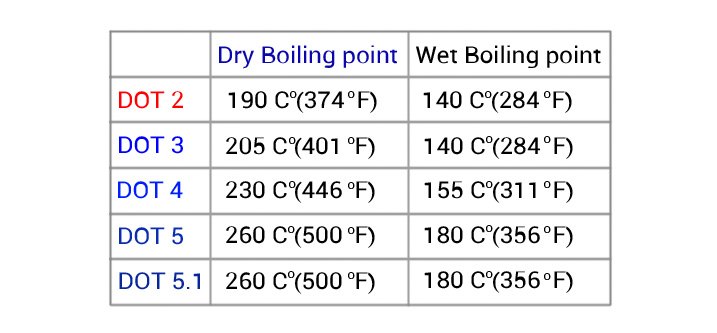Braking systems aren’t indestructible. Parts, like the rubber in the valves in the master cylinder, calipers and wheel cylinders deteriorate. All of those nasty little bits that flake off end up in your brake fluid. Plus, the fluid itself can get old and worn out. Moisture can also get in the system. That leads to rust, which leads to more nasty bits in your brake fluid. All this adds up to a brake system with compromised effectiveness and decreased stopping power. We all know how important it is for our vehicles to stop on a dime and give us back a nickel change. Sometimes a Brake Flush is just what your vehicle needs to get that stopping power back.
Brake fluid is hygroscopic, which means it attracts and absorbs water from the surrounding atmosphere. The more water that it absorbs, the less effective it becomes when introduced into your vehicle’s braking system. With water in the mix, the boiling point of brake fluid can be greatly reduced, which given the pressures it’s under during braking translates into less effective stopping power and a spongy brake pedal.

When vehicles come to the shop for an inspection, we test the brake fluid for moisture content as well as color to make sure your brake fluid has not absorbed to much moisture from the air. With too much moisture in the fluid it can lower the boiling point of your brake fluid. This is crucial when you are towing or live in a mountainous area like we do in Nevad County. When brake fluid moisture point gets too high it lowers the boiling point the fluid can turn to a gas, and it does not compress as it should. This can cause pockets of air in the brake fluid that can cause a soft or spongy pedal.

The more moisture the lower the boiling point due to water getting in the fluid. The wet boiling point is more often than not a 3% moisture content. Keeping your brake fluid fresh and without moisture and contaminants will help ensure brake fluid is not the cause of a spongy brake pedal.
A good rule of thumb to use is to perform a brake flush every 30,000 miles to ensure the fluid is in good shape and free of contaminates. A brake fluid flush helps preserve brake efficiency and prevent corrosion by replacing old or contaminated brake fluid. As brake system components deteriorate over time, changing the brake fluid regularly can not only make your automobile safer, but will also improve the life of your brake components and save money in the long run.
Give us a call or stop by any location and we will take a look at the condition of your brake fluid. We will let you know if you need a brake flush or if your brake fluid looks good.


